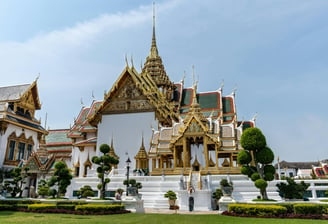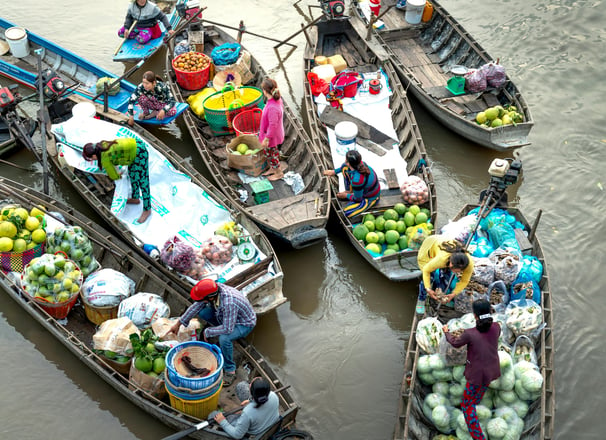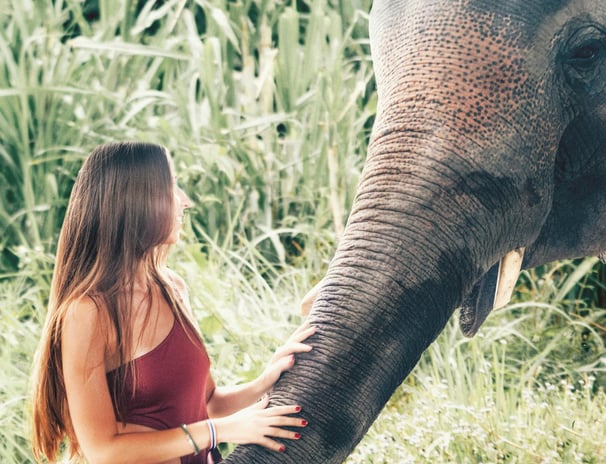The Ultimate Travel Guide to Thailand
Planning a trip to Thailand? "The Ultimate Travel Guide to Thailand" has everything you need to make your journey unforgettable! From the bustling streets of Bangkok to the serene beaches of Phuket, this comprehensive guide covers must-see destinations, tips for experiencing authentic Thai culture, and advice on food, shopping, and transportation. Discover hidden gems, ethical elephant sanctuaries, and vibrant night markets, along with practical advice on budgeting, local etiquette, and navigating the country. Whether you're looking for adventure, relaxation, or cultural exploration, this guide is your go-to resource for an incredible Thai experience!
14 min read


Getting to Thailand: Your Gateway to Adventure
Reaching Thailand, a vibrant country known for its rich culture and stunning landscapes, is a straightforward process owing to its well-connected transportation network. The primary entry points for international travelers are the major international airports, most notably Suvarnabhumi Airport (BKK) in Bangkok, which serves as the main hub for international flights. Other prominent airports include Don Mueang International Airport (DMK), with a focus on low-cost carriers, and Phuket International Airport (HKT), catering to travelers heading to the southern beaches. Chiang Mai International Airport (CNX) is another key airport, popular with those looking to explore the northern regions of Thailand.
Numerous airlines operate flights to Thailand, ranging from full-service carriers such as Thai Airways and Singapore Airlines to budget options like AirAsia and VietJet Air. Non-stop flights from major cities in North America, Europe, and Asia ensure convenient access for travelers worldwide. When planning your trip, it is essential to compare flight options, keeping in mind layover times and the total journey duration. Booking well in advance can also lead to more favorable prices, especially during peak travel seasons.
Upon arrival, travelers will find various transportation options to explore the country further. Domestic flights are available for long distances, while buses and trains offer budget-friendly alternatives for ground travel. Ride-sharing applications and taxis are widely used within cities for local transportation. Additionally, when visiting for tourism, visitors should be acquainted with the visa requirements. Many nationalities can enter Thailand visa-free for short stays or obtain a visa on arrival. Travelers are advised to verify the latest regulations before embarking on their journey, ensuring a smooth and enjoyable start to their Thai adventure.
When to Visit Thailand: Finding Your Perfect Time
Thailand, known for its stunning landscapes and rich cultural heritage, offers a variety of experiences throughout the year. Understanding the seasonal variations in Thailand's climate is crucial for travelers aiming to find their ideal time for a visit. Generally, the country can be divided into three main tourist seasons: high season, shoulder season, and low season.
The high season runs from November to March when the weather is most favorable. This period features cool and dry conditions, attracting a larger number of tourists. Popular destinations such as Bangkok, Phuket, and Chiang Mai can become crowded, particularly around holidays like Songkran and the New Year. However, the vibrant atmosphere, coupled with numerous festivals and events, makes this an enticing time to explore Thailand. Travelers should anticipate higher prices for accommodations and activities during this peak period.
Following the high season, the shoulder season spans from April to June and September to October. During April and May, temperatures rise significantly, making it essential for visitors to stay hydrated and plan outdoor activities accordingly. However, fewer tourists during this time can often lead to lower prices and a more intimate experience of Thailand's attractions. The rainy season typically begins in June and lasts until October, yet it is important to note that rain showers are often brief and sporadic, allowing for enjoyable excursions between downpours. The shoulder season is ideal for budget-conscious travelers seeking a richer experience without large crowds.
Finally, the low season, encompassing July to September, is marked by frequent rain and elevated humidity. This period can deter tourists, which in turn results in reduced prices and fewer people at popular sites. While the weather may not be ideal for outdoor activities, the lush landscapes and vibrant green scenery create a unique beauty only found during this season. Ultimately, when considering when to visit Thailand, travelers should weigh their preferences for weather conditions, crowd sizes, and pricing to determine the best time for their journey.
Top Destinations in Thailand: Must-See Attractions
Thailand is renowned for its rich culture, stunning landscapes, and vibrant cities, making it an enticing destination for travelers. Among its diverse attractions, four locations stand out as essential stops for first-time visitors: Bangkok, Chiang Mai, Phuket, and Ayutthaya.
Bangkok, the bustling capital city, serves as the gateway to Thailand's wonders. Visitors can explore the Grand Palace, which showcases intricate architecture and the revered Emerald Buddha. The Chatuchak Weekend Market is a must-visit for those seeking an authentic local shopping experience. Additionally, a traditional long-tail boat ride through the city's klongs (canals) offers a unique perspective of everyday life in Bangkok.
Moving north, Chiang Mai presents a blend of ancient traditions and natural beauty. This city is famous for its numerous temples, including Wat Phra That Doi Suthep, which provides breathtaking views of the surrounding countryside. The vibrant Night Bazaar is another highlight, where visitors can indulge in local crafts and street food. For those interested in cultural experiences, engaging in a local cooking class or participating in the Yi Peng Lantern Festival adds depth to the visit.
Phuket, Thailand's largest island, entices travelers with its picturesque beaches and lively nightlife. Patong Beach is noted for water sports and vibrant nightlife, while Kata Beach offers a more tranquil environment. Visitors can also take a boat tour to the nearby Phi Phi Islands, famed for their stunning scenery and crystal-clear waters. To explore the local culture, the Big Buddha and Wat Chalong are significant landmarks worth visiting.
Lastly, the historical city of Ayutthaya, a UNESCO World Heritage site, takes visitors back in time with its impressive ruins and temples. Key sites include Wat Chaiwatthanaram and Wat Phra Si Sanphet, both showcasing the grandeur of Thailand's ancient capital. A boat cruise around the island city enriches the experience, providing a unique viewpoint of its archaeological treasures.
Each of these destinations contributes to the overall magic of Thailand, promising unforgettable experiences that encapsulate the country's essence.
Off the Beaten Path: Hidden Gems of Thailand
Thailand is renowned for its stunning beaches, vibrant cities, and rich cultural heritage; however, beyond the well-trodden tourist paths lie hidden gems that offer unique and unforgettable experiences. One such destination is Pai, a quaint town nestled in the mountains of Northern Thailand. Known for its breathtaking landscapes, lush rice paddies, and tranquil hot springs, Pai is a sanctuary for those seeking tranquility. Visitors can explore traditional bamboo huts, engage in yoga retreats, or embark on adventurous treks through the surrounding hills. The laid-back atmosphere and welcoming local community make Pai an ideal spot for relaxation and reflection.
Another remarkable hidden gem is Koh Lanta, an island that prides itself on its serene vibe and untouched beaches. Unlike the bustling crowds found in places like Phuket, Koh Lanta offers a more peaceful alternative for beach lovers and nature enthusiasts. The island is home to a mix of stunning coastline and rich biodiversity, making it perfect for exploring the nearby national parks. Tourists can partake in activities such as snorkeling in crystal-clear waters, visiting the famous Lanta Animal Welfare Center, or simply enjoying stunning sunsets on the beach. This uncommercialized paradise allows travelers to connect with nature and experience the island's unique charm.
Lastly, Sukhothai, the first capital of Thailand, remains one of the country’s lesser-known historical sites. The Sukhothai Historical Park is a UNESCO World Heritage site, where visitors can wander among ancient ruins and admire the intricate architecture of temples dating back to the 13th century. This destination is particularly attractive for those interested in history and culture, offering a glimpse into Thailand’s past. Biking through the park provides a sense of exploration, allowing tourists to discover its hidden treasures and appreciate the tranquil ambiance that seems to transport them back in time.
Cultural Etiquette: What You Need to Know
When visiting Thailand, understanding the local cultural etiquette is essential for ensuring a respectful and enjoyable experience. One of the most important aspects of Thai culture is the dress code, particularly in sacred spaces like temples. Visitors are expected to dress modestly, covering shoulders and knees. For women, this often means wearing long skirts or dresses, while men should opt for long pants and shirts with sleeves. It is advisable to check specific temple rules, as some may provide shawls or sarongs for those who do not adhere to the dress code.
Greetings in Thailand also follow specific customs. The traditional Thai greeting, known as the "wai," involves pressing your palms together at chest level and bowing slightly. While a handshake is acceptable, especially in tourist areas, incorporating the wai signifies respect. Additionally, showing respect towards a person's head is crucial, as it is considered the most sacred part of the body. Thus, avoid patting someone on the head or touching it unless you have a close relationship.
In terms of tipping, it is customary to leave small amounts in restaurants, typically rounding up the bill or leaving behind 10% of the total. Tipping is not obligatory but is greatly appreciated, especially in tourist areas where service staff may rely on tips for their income. Furthermore, knowing a few basic Thai phrases can enhance a visitor's experience. Simple words like “sawasdee” (hello) and “khop khun” (thank you) can go a long way in fostering goodwill with locals.
Observing these cultural norms allows travelers to navigate Thailand respectfully and thoughtfully, enriching their journey while promoting positive interactions with the local community.
Cuisine Delights: A Taste of Thailand
Thailand is renowned for its vibrant and diverse culinary landscape, offering an experience that caters to the taste buds of every traveler. Thai cuisine is a harmonious blend of flavors, aromas, and textures, where the perfect balance of sweet, sour, salty, and spicy is meticulously crafted in each dish. Among the myriad of options, some of the most beloved meals include Pad Thai, Tom Yum Goong, and green curry.
Pad Thai, a quintessential stir-fried noodle dish, features rice noodles tossed in a savory sauce made from tamarind paste, fish sauce, and a hint of sugar, garnished with crushed peanuts, bean sprouts, and lime. This dish is emblematic of Thai street food culture, where vendors offer freshly prepared versions that are both affordable and delicious.
Another hallmark of Thai cuisine is Tom Yum Goong, a spicy and sour shrimp soup that boasts a fragrant mix of lemongrass, kaffir lime leaves, and galangal. This dish quickly becomes a favorite among visitors who relish its bold flavors. Additionally, green curry stands out with its creamy coconut milk base, combined with green curry paste, vegetables, and a choice of protein, resulting in a rich and hearty meal.
When exploring Thailand, it is essential to immerse oneself in the street food culture. Street vendors often serve authentic dishes that may be hard to find in upscale restaurants. Markets such as Chatuchak in Bangkok or the Night Bazaar in Chiang Mai are particularly famous for their extensive food selections. To truly savor Thailand's culinary delights, one should not shy away from trying local specialties at informal eateries and food stalls. This approach will allow travelers to discover authentic flavors that reflect the rich history and culture of this magnificent country.
Practical Travel Tips for Your Thai Adventure
Thailand, with its rich culture and breathtaking landscapes, offers a myriad of experiences for travelers. To ensure a seamless journey, it is essential to be well-prepared and informed about the practical aspects of traveling in this beautiful country.
Transportation within Thailand is both varied and convenient. The most common methods include tuk-tuks, motorbike taxis, and public buses. While tuk-tuks offer a unique charm and are suitable for short distances, it is advisable to agree on a fare beforehand to avoid overcharging. For longer distances, the BTS Skytrain and MRT subway in Bangkok provide efficient and affordable options. Moreover, domestic flights are available for travelers wishing to explore distant regions, such as the islands in the south or the northern city of Chiang Mai.
Currency exchange should also be a focus for anyone traveling in Thailand. The Thai Baht (THB) is the official currency, and exchanging money at reputable banks or authorized exchange booths is strongly advised. ATMs are widely available, but keep in mind that foreign cards may incur additional fees. It is prudent to carry some cash, especially in rural areas, where credit cards may not be accepted.
Safety is paramount while traveling. Thailand is generally a safe destination, but awareness of your surroundings is essential. Avoid displaying valuable items and be cautious when using public transportation late at night. It is also recommended to secure travel insurance that covers medical emergencies and theft. This way, you can enjoy your trip with peace of mind.
Further enhancing your travel experience, consider connecting with local resources, such as travel forums or social media groups, where tips and advice from fellow travelers can be invaluable. By being informed and well-prepared, you can fully appreciate the wonders that Thailand has to offer.
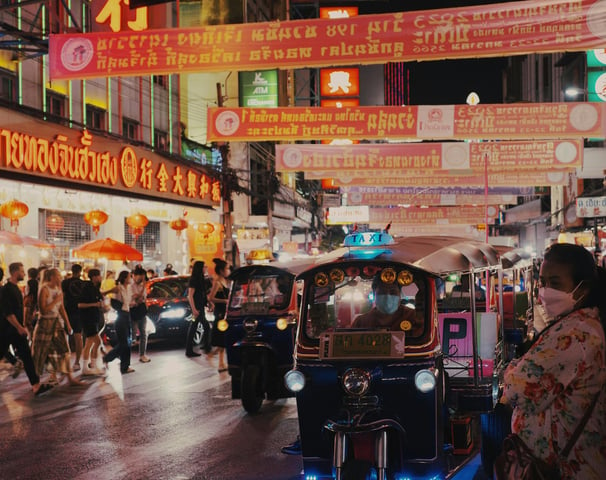

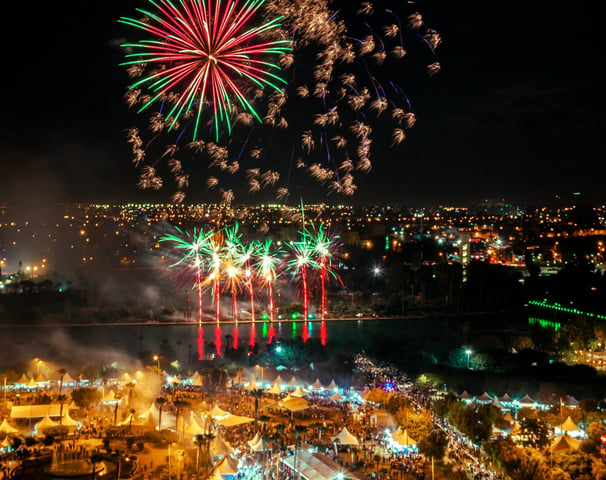

Explore Bangkok on a tuk tuk
Riding a tuk-tuk, or samlor (three-wheeler), is one of the most iconic ways to experience the energy of Bangkok’s streets. These colorful, open-air vehicles allow you to feel the pulse of the city as you weave through traffic, taking in the sights, sounds, and smells all around you. Start with a city tour through the vibrant alleys of Chinatown, where traditional markets and neon signs light up the night. Then, make your way to the bustling stalls of Chatuchak Market, perfect for finding unique souvenirs and tasting authentic Thai flavors. Along the way, don’t forget to stop and enjoy the amazing street food—from fragrant pad thai to fresh mango sticky rice, every bite is a chance to savor Bangkok’s culinary magic.
Join the Full Moon Party
Experience the legendary Full Moon Party on Koh Phangan! Originally a laid-back beach gathering for hippies and backpackers enjoying music and a few beers, this iconic celebration has transformed into a massive festival drawing thousands of fun-seekers under the glowing moonlight. Each bar along the beach plays its own music, creating an eclectic soundscape, while vendors serve up tropical cocktails, tasty snacks, and local street food. Fire dancers perform breathtaking shows that light up the night and add to the electrifying atmosphere. Can't make it to the Full Moon Party? No worries—Koh Phangan also hosts Half-Moon, Quarter-Moon, and Black-Moon parties throughout the month, so there’s always a reason to celebrate
Visit The Grand Palace & Wat Prakeaw
If there’s one unmissable landmark in Bangkok, it has to be the Grand Palace—an iconic site and the city's most renowned attraction. Built in 1782 by King Rama I, the palace served as the residence of the Thai King, the Royal Court, and the government for over 150 years. Even today, its breathtaking architecture and intricate detailing captivate visitors, showcasing the exceptional craftsmanship and creativity of the Thai people. Within the Grand Palace complex, you’ll find Wat Phra Kaew, revered as Thailand’s most important Buddhist temple and home to the sacred Emerald Buddha, a symbol of protection and national pride. Nearby, Wat Pho draws visitors to marvel at its massive golden Reclining Buddha statue, symbolizing peace and spiritual fulfillment, and hosts a renowned traditional Thai massage school where you can experience authentic Thai massage techniques. Visiting these sites provides a fascinating journey into Thailand’s history, spirituality, and culture, all within the grand surroundings of this awe-inspiring complex.
Shop at the floating markets
Bangkok’s floating markets are famous worldwide, their vibrant colors and unique charm captured in countless travel guides, websites, and books. Visiting one of these bustling waterside markets is an unforgettable experience, offering a glimpse into the everyday life of local Thai communities. You’ll see locals skillfully navigating wooden boats laden with fresh produce, homemade dishes, and traditional crafts, all while cooking and selling directly from the water. It's a rare opportunity to taste incredible flavors you may not find at home, from tropical fruits to fragrant Thai street food prepared right before your eyes. Some of Bangkok’s most popular floating markets include Taling Chan, Bang Ku Wiang, Tha Kha, and the famous Damnoen Saduak, each offering its own unique blend of sights, sounds, and tastes. Make sure to bring a camera and an appetite—there’s no better way to savor Thailand’s culinary and cultural richness.
Hike in Khao Yai National Park
Khao Yai National Park, a UNESCO World Heritage Site, lies about 2.5 hours north of Bangkok and is one of Thailand's most popular nature destinations. Spanning across four provinces—Saraburi, Nakhon Nayok, Nakhon Ratchasima, and Prachinburi—the park is known for its lush landscapes, stunning waterfalls, and rich biodiversity. With over 320 bird species, 67 mammal species, and thousands of plant varieties, Khao Yai offers a paradise for nature lovers and hikers. The park’s vast, scenic valleys and towering forests make it a must-visit for those seeking adventure and tranquility. Visitors can explore numerous trails, spotting wildlife like elephants and tigers while enjoying the serene beauty of the surroundings. Whether you’re into hiking, wildlife spotting, or simply soaking in the natural beauty, Khao Yai promises a unique and unforgettable experience.
Release a lantern
Yi Peng and Loy Krathong are magical lantern festivals celebrated every November in Chiang Mai, creating a stunning spectacle of lights. Thousands of lanterns are released into the sky along the banks of the Ping River, filling the night with soft, glowing colors. This breathtaking sight is the festival’s highlight, but the celebration also includes lively parades, religious ceremonies, traditional dance, and fireworks. Visitors can also float krathongs—small, candle-lit boats—on the river as offerings to the water goddess. The vibrant atmosphere of the event captures the essence of Thai culture, making it a unique and unforgettable experience. The entire city joins in the celebrations, creating a sense of unity and joy that fills the air. It’s a time when locals and tourists alike come together to honor tradition and create lasting memories.


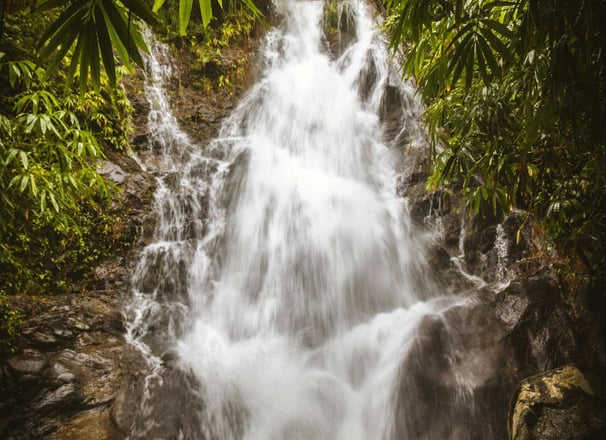

Get close to the Elephants
If you’re passionate about wildlife and have dreamed of getting up close with elephants, Thailand is an ideal destination. Many elephants in the country have endured hardships, from mistreatment to overwork, but thankfully, a number of them have found refuge in ethical elephant parks, where they’re given a second chance at a peaceful life. These sanctuaries focus on rehabilitation and provide compassionate environments for these gentle giants. Visitors can even volunteer at some of these parks, helping care for the elephants, learning about their behaviors, and witnessing their recovery. A visit to one of these ethical sanctuaries not only supports the well-being of the animals but also leaves you with lasting memories of a truly meaningful experience.
Yoga retreat
Thailand is home to some of the world’s most exquisite yoga retreats, making it a perfect destination for relaxation and self-discovery. Spend a few days at one of these serene sanctuaries, where you can deepen your yoga practice with skilled instructors, savor nourishing and delicious health-focused cuisine, and find peace through meditation, all amidst the lush, calming surroundings of tropical jungles. Many retreats also offer holistic wellness programs, including massage and herbal therapies, to help restore balance and vitality. Returning home, you’ll feel completely refreshed, with a renewed sense of energy and inner calm that lasts far beyond your time in Thailand.
Tips & tricks
Book services in advance to secure the best rates and save money on everything from accommodations to tours.
Visit during Thailand’s low season, April to September, for fewer crowds and easier access to popular spots, letting you enjoy a more relaxed experience.
Rent a motorbike for flexibility and fun. It’s cost-effective compared to constant taxi fares, but always wear a helmet and prioritize safety.
Pack light. You’ll find affordable, stylish clothing and luggage options in Thailand—plus, it leaves room for unique souvenirs.
Choose guided tours to see more sites at a lower cost while enjoying enriched experiences from local insights and hidden gems.
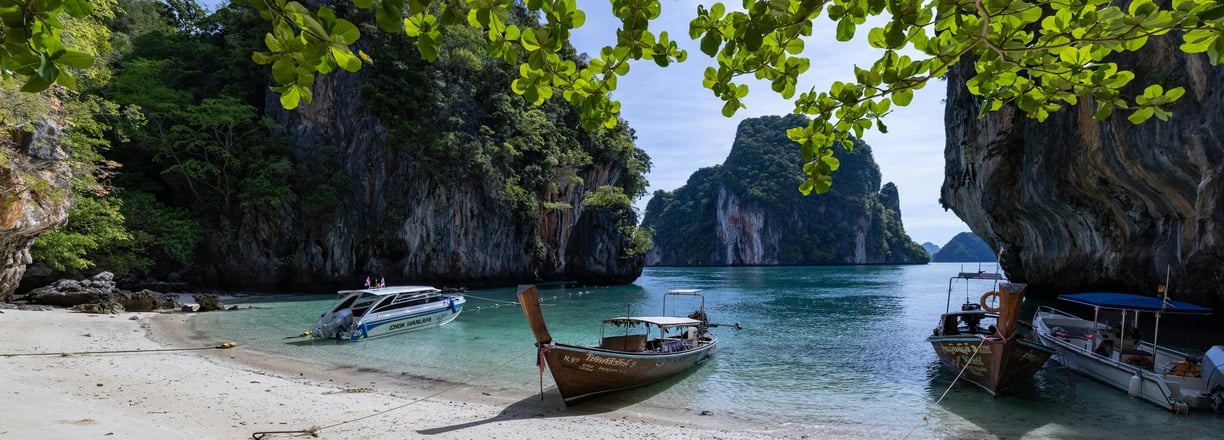

Respect local customs and laws to ensure a smooth journey and avoid any legal issues during your trip.
Use local transportation options like trains or buses for a budget-friendly way to explore the area and meet locals.
Look for accommodation deals and discounts online before booking—great deals are available if you plan ahead!
Stay in guesthouses or hostels for a comfortable and economical stay, often with a chance to meet other travelers.
Use refillable water bottles to save money and reduce plastic waste while staying hydrated in Thailand's warm climate.


